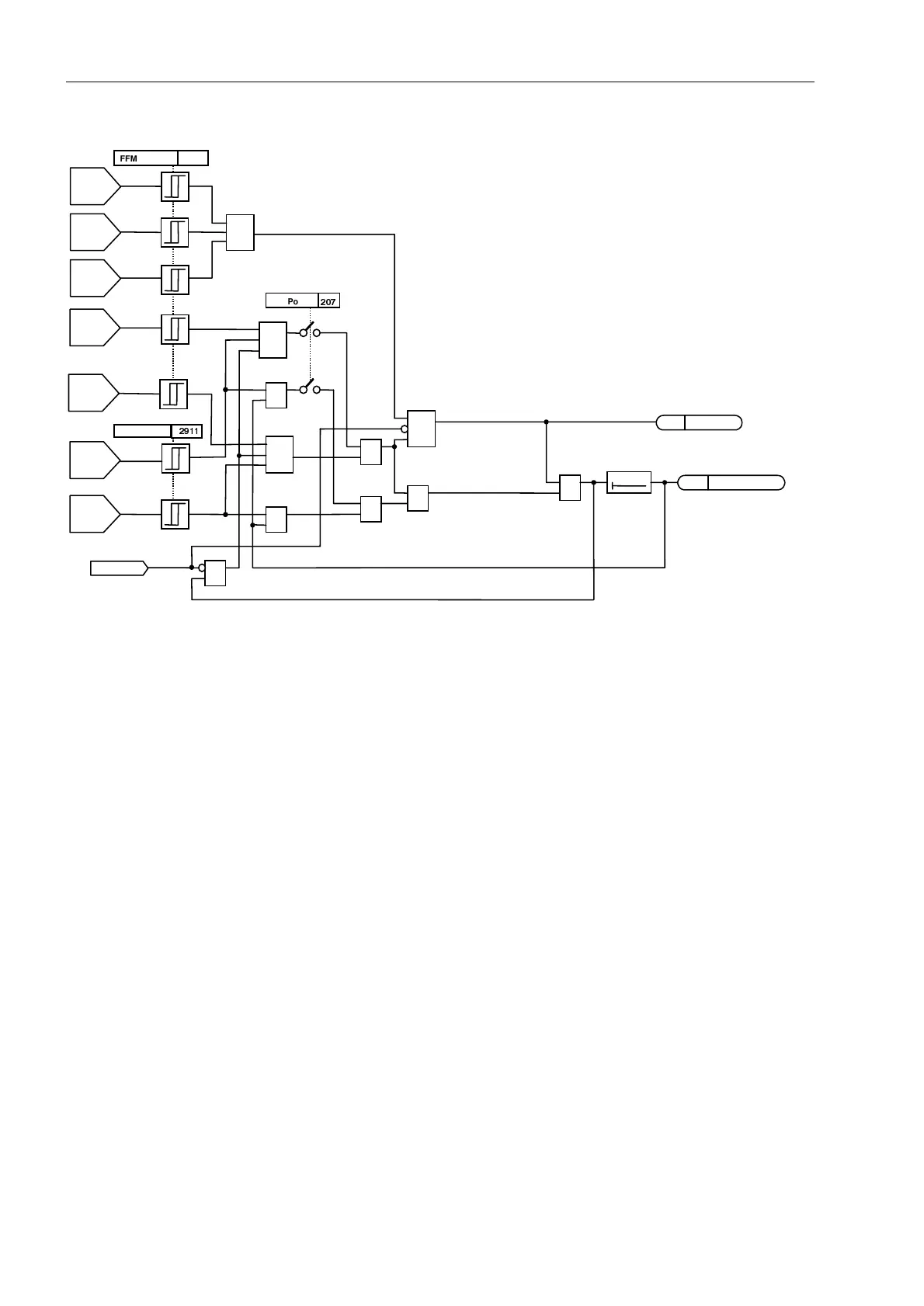Functions
6-258 7SA6 Manual
C53000-G1176-C133-1
Figure 6-133 Logic diagram of the fuse failure monitor with zero and negative sequence system
Fuse Failure
Monitor
(Three-Phase)
A three-phase failure of the secondary measured voltage can be distinguished from
an actual system fault by the fact that the currents have no significant change in the
event of a failure in the secondary measured voltage. For this reason, the sampled
current values are routed to a buffer, so that the difference between the present and
stored current values can be analysed to recognize the magnitude of the current
differential (current differential criterion). A three-pole voltage failure is detected if
• all three phase–earth voltages are smaller than the threshold ))08PD[SK,
• the current differential in all three phases is smaller than the threshold
))0,GHOWDS, and
• all three phase current amplitudes are greater than the minimum current ,SK! for
impedance measurement by the distance protection.
If no stored current values are present (yet), the current magnitude criterion is resorted
to. A three-pole system voltage failure is detected in this case if
• all three phase–earth voltages are smaller than the threshold ))08PD[SK,
• all three phase current amplitudes are smaller than the minimum current ,SK! for
impedance measurement by the distance protection, and
• all three phase current amplitudes are greater than a fixed set noise threshold
(40 mA).
If such a voltage failure is recognized, the distance protection and all other functions
that operate on the basis of undervoltage (e.g. also weak infeed tripping, undervoltage
protection) are blocked until the voltage failure is removed; thereafter the blocking is
automatically removed. Definite time overcurrent emergency operation is possible
&
1pole open
FFM U>(min)
2912
10s
FFM Pickup
FFM I< (max)
Star Point
≥ 1
≥ 1
&
&
&
&
Slow
Fast
Earthed
Earthed
I
L1
I
L2
I
L3
3I
0
3I
2
3U
0
3U
2
≥ 1
≥ 1
≥ 1
≥ 1
FFM Pickup Delaid
0170 VT FuseFail
0169 VT FuseFail > 10s

